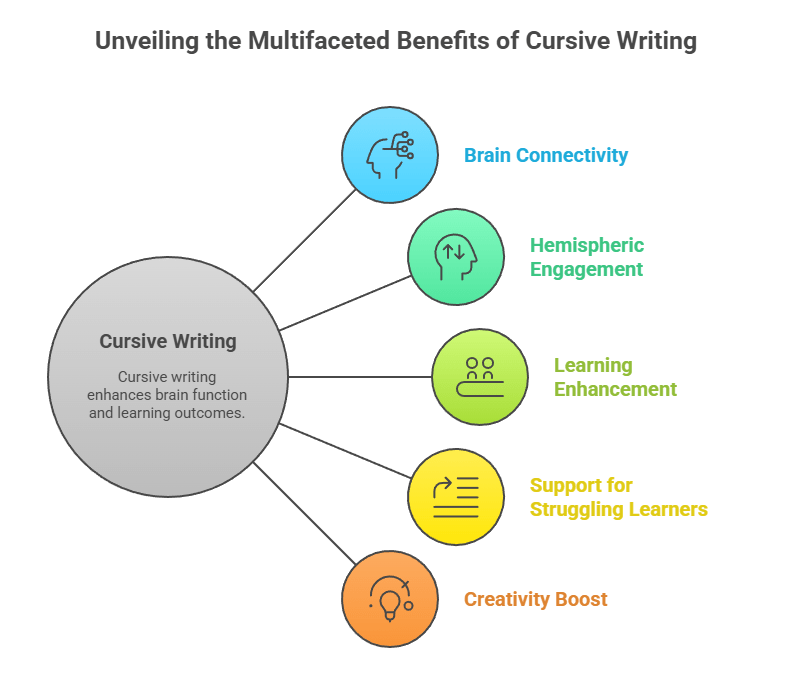
Introduction: More Than Just Beautiful Letters
Cursive handwriting often conjures images of elegance and tradition, but its benefits go far beyond aesthetic appeal. Today, neuroscience and education research confirm what teachers and occupational therapists have long observed — that cursive writing plays a powerful role in shaping how the brain thinks, learns, and remembers.
1. Cursive Writing Builds Brain Connectivity
Studies using brain imaging show that writing in cursive activates large areas of the brain responsible for thinking, language, and memory. A 2012 study by Dr. Karin James at Indiana University found that children who practised cursive showed heightened brain activity in regions linked to reading and comprehension — unlike their peers who only used typing or print.
2. Both Hemispheres Are Engaged
Cursive writing creates synchronised activity across both the left and right hemispheres of the brain. This cross-lateral movement enhances neural integration, improving focus, problem-solving, and long-term memory. Typing or printing letters does not produce the same effect.
3.Writing by Hand Enhances Learning
Cursive slows down the writing process just enough to allow the brain to retain more. In classroom studies, students who took notes by hand (especially in cursive) performed better on conceptual understanding tests than those who typed. This is because handwriting requires real-time thought, motor planning, and letter formation — all of which reinforce memory and comprehension.
4. Cursive Helps Struggling Learners
For students with learning differences like dyslexia or ADHD, cursive can offer a more natural, fluid writing style. Because letters are connected, there are fewer breaks in writing, helping students maintain rhythm, reduce reversals, and improve sequencing. In some therapeutic settings, cursive is even used as an intervention tool.
5. Cursive Encourages Creativity
The continuous flow of cursive writing promotes what psychologists call “flow state” — a condition where students become absorbed in the task and generate ideas more freely. This is why many writers, artists, and thinkers still prefer pen and paper when brainstorming.
Conclusion: Why We Teach Cursive at Writewiz
At Writewiz, cursive is not an option — it’s a neurological advantage. Our curriculum builds handwriting fluency through structured cursive modules that are aligned with motor development, academic content, and exam-readiness.
In a world that moves fast, students still need the ability to slow down, think deeply, and express clearly. Cursive handwriting trains the brain to do exactly that.

